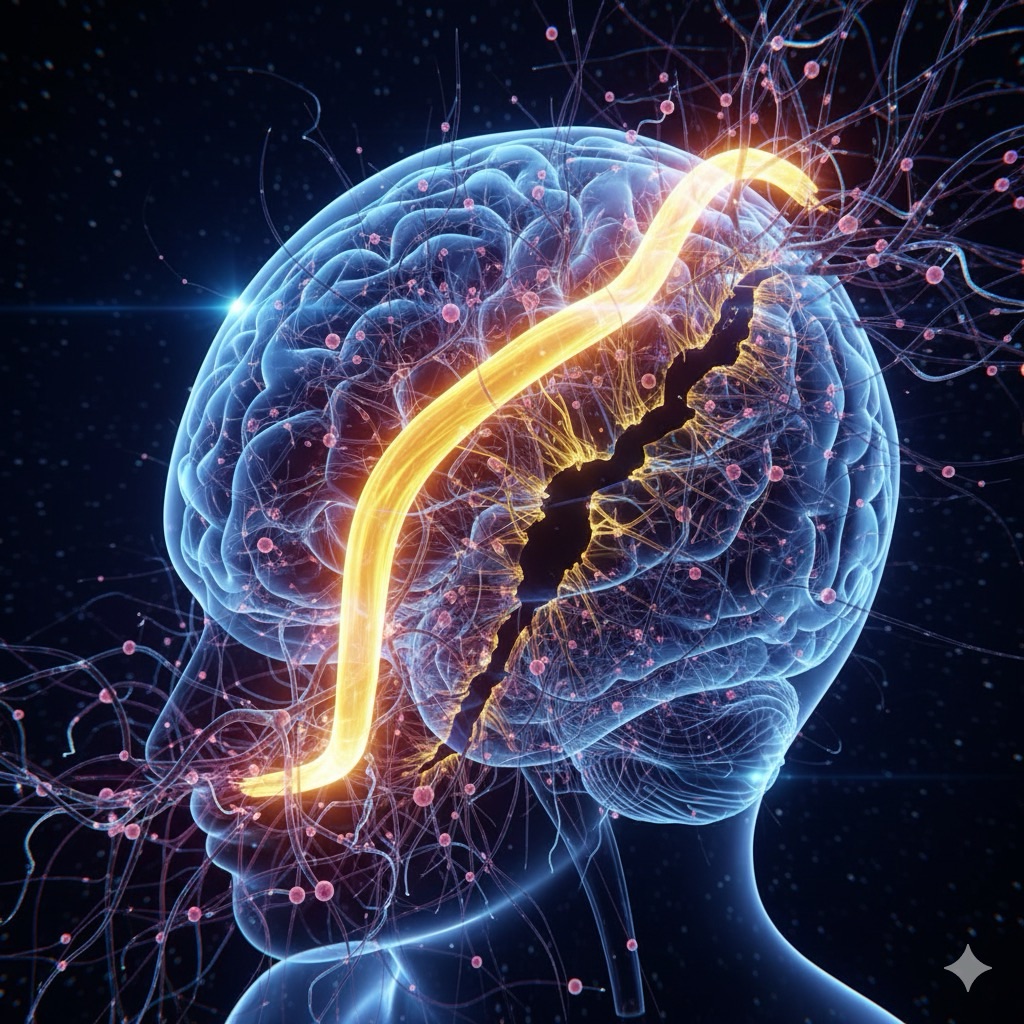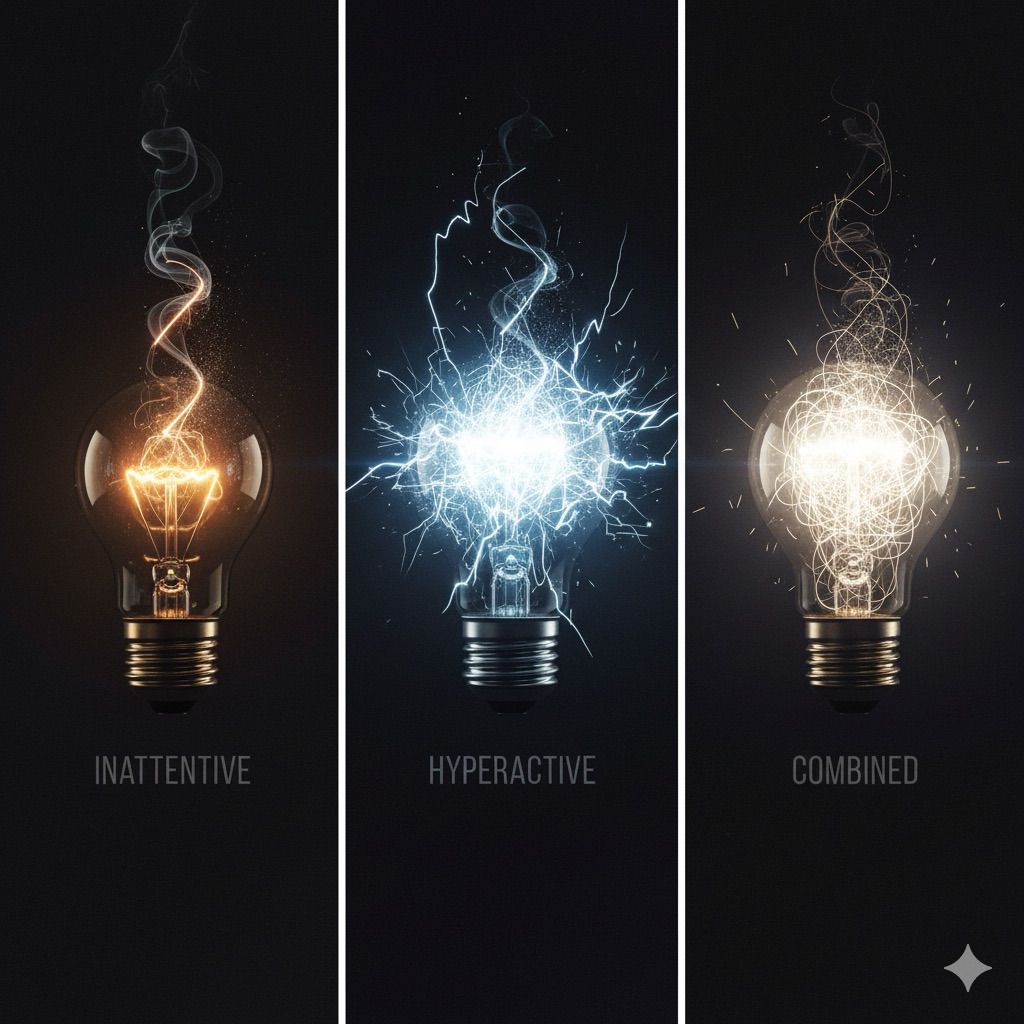In the public imagination, Attention-Deficit/Hyperactivity Disorder (ADHD) often looks like a restless young boy who can’t sit still in class. While this can be one manifestation, this stereotype is a vast oversimplification of a complex and nuanced neurodevelopmental condition. ADHD is not a deficit of attention, but a dysregulation of it. It’s not a character flaw; it’s a differently wired brain that comes with both significant challenges and remarkable strengths.
What is ADHD, Really?
At its core, ADHD is a disorder of executive functions—the management system of the brain. Think of your brain’s executive functions as the CEO. This CEO is responsible for prioritizing tasks, managing time, regulating emotions, controlling impulses, and holding information in working memory. In the ADHD brain, this CEO is often brilliant but overwhelmed, working with outdated software and a constantly ringing fire alarm.

The official diagnosis, as per the DSM-5, categorizes ADHD into three primary presentations:
- Predominantly Inattentive: This is what was once known as ADD. The hallmarks are difficulty sustaining focus, being easily distracted, forgetfulness in daily activities, and organizational challenges. Individuals with this presentation may not be hyperactive; they might even be quiet and daydreamy, causing their struggles to be overlooked.
- Predominantly Hyperactive-Impulsive: This is characterized by restlessness, fidgeting, excessive talking, difficulty remaining seated, and impulsivity (acting without thinking, interrupting others).
- Combined Presentation: This is the most common type, featuring symptoms from both inattentive and hyperactive-impulsive categories.
It’s crucial to understand that these are presentations, not rigid personality types. They can also look different across genders and ages. Girls and women, for instance, are more likely to have the inattentive presentation, leading to many being misdiagnosed or going undiagnosed until adulthood.
The ADHD Brain: A Different Wiring
Science shows that the ADHD brain has structural and functional differences. Key neurotransmitters, particularly dopamine and norepinephrine, are not as readily available in the neural networks responsible for reward, motivation, and executive function.
This neurobiological basis explains why classic advice like “just try harder” is not only unhelpful but also harmful. A person with ADHD isn’t choosing to be disorganized or forgetful any more than a person with nearsightedness is choosing to squint. They are dealing with a real, physiological difference.

The Ripple Effect: Challenges Beyond Focus
When people think of ADHD, they often stop at “trouble paying attention.” The reality is far more pervasive. The core symptoms create ripples that affect nearly every aspect of life:
· The Motivation Dilemma: The ADHD brain is often driven by interest, challenge, novelty, and urgency—not importance. This is why someone can hyperfocus for hours on a captivating video game but struggle for minutes to start a crucial work report.
· Emotional Dysregulation: Many with ADHD experience emotions more intensely and have a slower return to their emotional baseline. They may be described as “too sensitive” or having “a short fuse.”
· Rejection Sensitive Dysphoria (RSD): This is an extreme emotional sensitivity to perceived criticism, rejection, or failure. It can be crippling and is a major source of anxiety.
· Executive Dysfunction: This umbrella term covers the daily struggles with time management (“time blindness”), task initiation, planning, and organization that are the true hallmarks of the condition.

The Flip Side: The Strengths of the ADHD Brain
To view ADHD only through a lens of deficit is to miss half the picture. The same neurological wiring that causes challenges can also be the source of incredible strengths. Many individuals with ADHD are:
· Creative and Innovative: Their ability to make novel connections between seemingly unrelated ideas can lead to groundbreaking insights and solutions.
· Resilient: Navigating a world not designed for them builds immense resilience and problem-solving skills.
· Energetic and Enthusiastic: When passionate about a project, their hyperfocus and energy can drive them to achieve remarkable things.
· Spontaneous and Fun-Loving: They can bring a sense of adventure, humor, and out-of-the-box thinking to their relationships and work.

Diagnosis and Management: A Path Forward
Receiving a formal diagnosis from a qualified professional (like a psychiatrist or clinical psychologist) can be a life-changing, validating experience. It’s not about labeling a person, but about understanding their brain’s operating manual.
Management is typically multi-faceted and personalized, often including:
· Medication: Stimulant and non-stimulant medications can be highly effective. They work by increasing the availability of key neurotransmitters in the brain, essentially giving the “CEO” the resources it needs to function effectively.
· Therapy and Coaching: Cognitive Behavioral Therapy (CBT) can help develop coping mechanisms, challenge negative thought patterns, and manage RSD and anxiety. ADHD coaching focuses on practical life skills, organization, and time management strategies.
· Lifestyle Strategies: Regular exercise, adequate sleep, a protein-rich diet, and mindfulness practices can all have a profound impact on symptom management.

A Final Thought
ADHD is a lifelong journey, not a childhood phase. By moving beyond stereotypes and embracing a more nuanced understanding, we can create environments—at home, in school, and in the workplace—that don’t just accommodate neurodivergent brains but celebrate their unique contributions. It’s not about curing a disorder, but about unlocking a different kind of potential.

If you are thinking that your child or student having these features. Please use SNAP IV criteria for further evaluation.
FAQs
- Is ADHD a real medical condition, or just an excuse for laziness?
Answer: ADHD is a very real, neurodevelopmental condition with a strong biological basis. Brain imaging studies show structural and functional differences in the brains of people with ADHD, particularly in areas governing attention, impulse control, and executive function. It is recognized by every major medical association worldwide. What looks like “laziness” is often a crippling difficulty with task initiation, motivation dysregulation, and being overwhelmed by executive demands.

- Don’t all kids have trouble focusing and behaving sometimes? How is this different?
Answer: Yes, all children (and adults) can be inattentive or impulsive at times. The key differences with ADHD are:
· Severity: The behaviors are significantly more pronounced.
· Pervasiveness: Symptoms occur in multiple settings (e.g., at school, at home, during hobbies).
· Consistency: The challenges are persistent, not situational.
· Impact: They directly and negatively impact social, academic, or occupational functioning.

- Can you develop ADHD as an adult, or is it only a childhood disorder?
Answer: ADHD is a neurodevelopmental disorder, meaning it begins in childhood. The current diagnostic criteria require that some symptoms were present before age 12. However, many individuals are not diagnosed until adulthood. This is often because:
· Their intelligence or supportive environment masked the symptoms in childhood.
· They had the inattentive type, which is less disruptive and often overlooked.
· The demands of adulthood (managing a household, career, family) overwhelmed their coping strategies.

- What’s the difference between ADD and ADHD?
Answer: “ADD” (Attention Deficit Disorder) is an outdated term. It was used in the 1980s to describe individuals with attention problems but without hyperactivity. The official diagnosis is now all under the umbrella of ADHD, with three specific presentations:
· Predominantly Inattentive Presentation (what people called ADD)
· Predominantly Hyperactive-Impulsive Presentation
· Combined Presentation
This change acknowledges that even the inattentive type can involve internal restlessness and that the core issue is a regulatory deficit.

- Is ADHD caused by bad parenting, too much screen time, or too much sugar?
Answer: No. These are persistent myths.
· Parenting: While ineffective parenting can worsen behaviors, it does not cause ADHD. The condition is primarily genetic.
· Screen Time/Sugar: Extensive research has found no convincing evidence that sugar or screen time causes ADHD. However, these can sometimes exacerbate symptoms in individuals who already have the condition. For example, the hyper-stimulation of fast-paced video games can make it harder to focus on slower-paced tasks like homework.

- How is ADHD treated? Is medication necessary?
Answer: Treatment is multi-faceted and highly personalized. The gold standard for managing moderate-to-severe ADHD often includes a combination of:
· Medication: Stimulants (like methylphenidate or amphetamines) are the most common and effective first-line treatment. They work by increasing dopamine and norepinephrine in the brain, improving focus and impulse control. Non-stimulant medications are also available.
· Therapy and Coaching: Cognitive Behavioral Therapy (CBT) helps manage negative thought patterns and develop coping skills. ADHD coaching focuses on practical strategies for organization, time management, and planning.
· Lifestyle Adjustments: Consistent exercise, sufficient sleep, good nutrition, and mindfulness practices can significantly support overall management.

Medication is not always necessary, but it is a highly effective tool for many.
- Do people with ADHD outgrow it?
Answer: Generally, no. ADHD is a lifelong condition. However, the expression of symptoms often changes with age. Hyperactivity tends to decrease, often morphing into a feeling of internal restlessness in adults. Meanwhile, challenges with organization, time management, and emotional regulation often become more prominent as life demands increase. Adults learn coping mechanisms, but the underlying neurodivergence remains.

- What are some of the hidden challenges of ADHD?
Answer: Beyond the core symptoms, people with ADHD often struggle with:
- Are there any positives to having ADHD?
· Rejection Sensitive Dysphoria (RSD): An intense, debilitating emotional pain triggered by perceived rejection or criticism.
· Time Blindness: A profound difficulty perceiving and managing time, leading to chronic lateness or poor time estimation.
· Executive Dysfunction: Struggles with task initiation (“procrastination”), planning, working memory, and follow-through.
· Emotional Dysregulation: Difficulty managing frustration, anger, or excitement, leading to quick shifts in mood.

Answer: Absolutely. When channeled and understood, the ADHD brain can be a tremendous asset. Common strengths include:
· Creativity and Innovation: The ability to make novel connections and think outside the box.
· Hyperfocus: An intense, deep concentration on tasks that are stimulating and interesting, leading to high productivity in those areas.
· Resilience: Having to navigate constant challenges often builds remarkable problem-solving skills and grit.
· Energy and Enthusiasm: A passion and vivacity that can be infectious and motivating for others.

